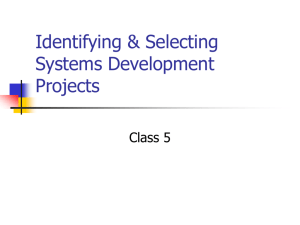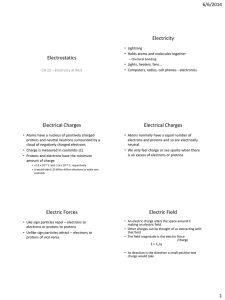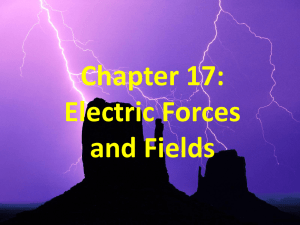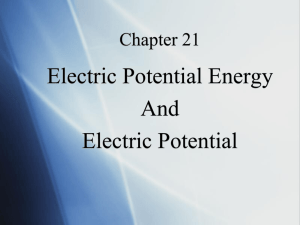Current
advertisement
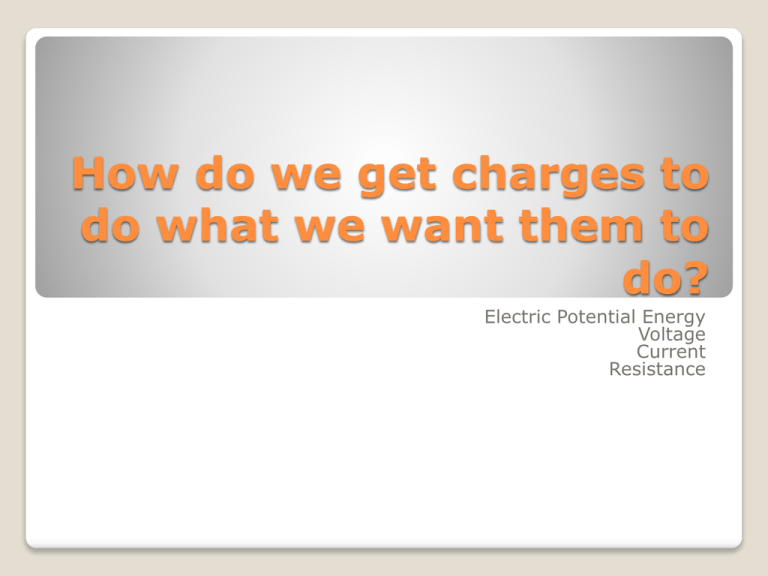
How do we get charges to do what we want them to do? Electric Potential Energy Voltage Current Resistance What happens to PEG? Was work done on the ball? What happens to PEG? What happens to KE? Consider the following… Energy of a particle due to its position within an electric field EPE is a form of mechanical energy When a charged particle is moved within an electric field, work is done and the energy of that particle changes Electric Potential Energy + Any change in EPE? E + + + + + EPE is increased - EPE decreased KE increases Consider the following: - When work is done against the electric field, EPE is increased ◦ Positives closer to other positives ◦ Negatives closer to other negatives ◦ Positives farther from negatives This particle now has more ability to move or change matter by virtue of its position within the electric field Electric Potential Energy Strong Electric Field Weak Electric Field Which one will increase the EPE of the charge more? Potential Difference tells the ability of an electric field to change the EPE of a positive charged particle or… The difference in EPE of charged particles at different places in an electric field Potential Difference / Voltage SI unit = Volt (V) ◦ 1 𝑣𝑜𝑙𝑡 = 1 𝐽𝑜𝑢𝑙𝑒 1 𝐶𝑜𝑢𝑙𝑜𝑚𝑏 ◦ A charge of one coulomb that experiences a potential change of 1 volt will gain 1 joule of energy Potential Difference / Voltage As electrons travel through bulb, EPE turned into light & heat The potential difference (orelectrons By the time voltage) of the get battery back to battery, all measures the EPE difference turnedininto other EPE of electrons at each forms terminal As electrons move within the wire, EPE turned into KE Electrons move within the field inside the battery → gain EPE Definition of Current Current is defined as the rate at which electric charges pass through a certain area of a conductor Current is the movement of charge carriers (+/- charges) Current is usually a flow of electrons (especially in metals) Charges are moved by an electric field (which causes a force) What is current? - Current (I) 𝐼= ∆𝑞 ∆𝑡 1 𝐴𝑚𝑝𝑒𝑟𝑒 = The rate of charge movement SI Unit: Ampere (A) 1 𝐶𝑜𝑙𝑜𝑢𝑚𝑏 1 𝑠𝑒𝑐𝑜𝑛𝑑 Electrons flow in one direction only Usually supplied by batteries and some types of generators A potential difference increases the EPE, which is then converted into other forms (especially kinetic) Direct Current (DC) Electrons flow in both directions, switching rapidly (based on the frequency) AC is produced by generators spinning coils of wire in a magnetic field, which produces a current Alternating Current (AC) Current vs. Voltage Current vs. Voltage Current vs. Voltage Current vs. Voltage Behavior is based on how tightly electrons are held to individual atoms Conductors & Insulators The impedance to charge flow through a material ◦ How hard is it to make charges move through the material Some materials allow charges to flow more easily than others, based on the previously stated factors Resistance Resistance is the relationship between applied voltage and the resulting current SI Unit: Ohm (Ω) 1 𝑂ℎ𝑚 (Ω) = 1 𝑉𝑜𝑙𝑡 1 𝐴𝑚𝑝 Resistance 𝑅= Δ𝑉 𝐼 The equation for resistance can be rewritten in the following form: 𝑉 = 𝐼𝑅 This is known as Ohm’s Law ◦ Resistance is not dependent on the voltage Ohm’s Law Below certain temperatures, some materials have the ability to conduct currents with no resistance Superconductivity

